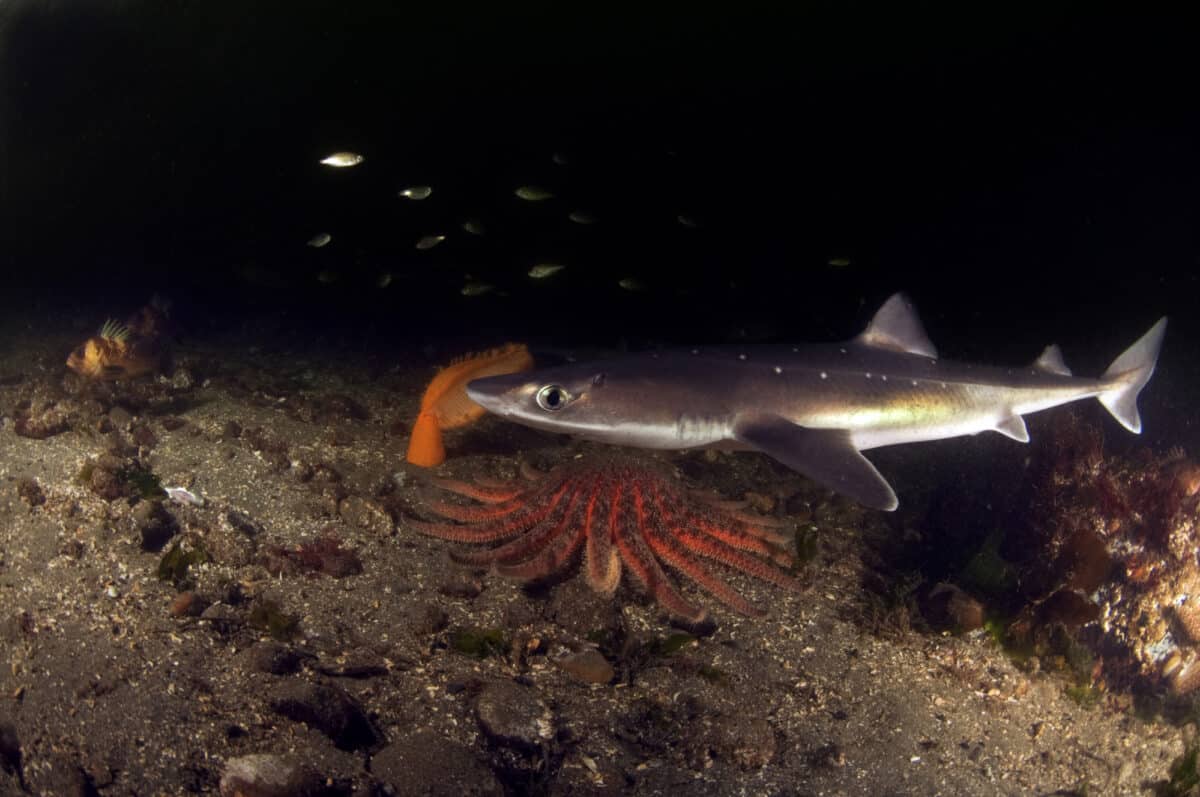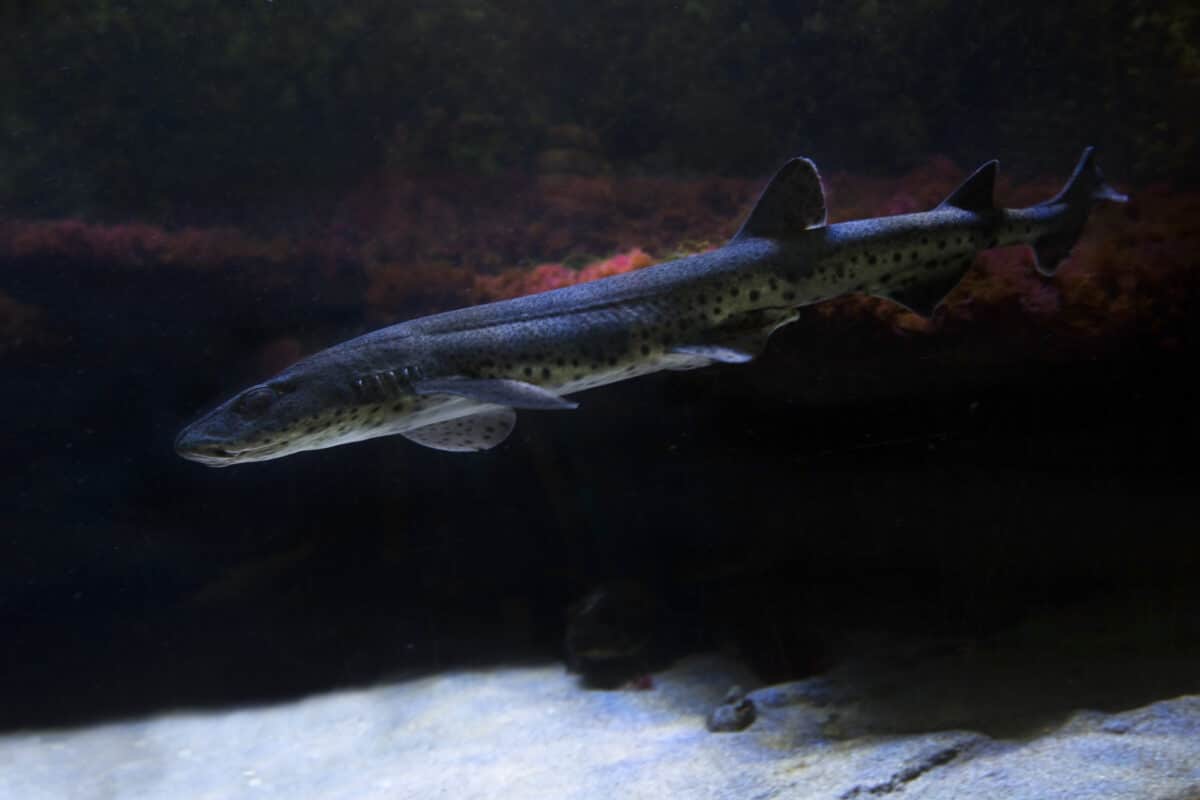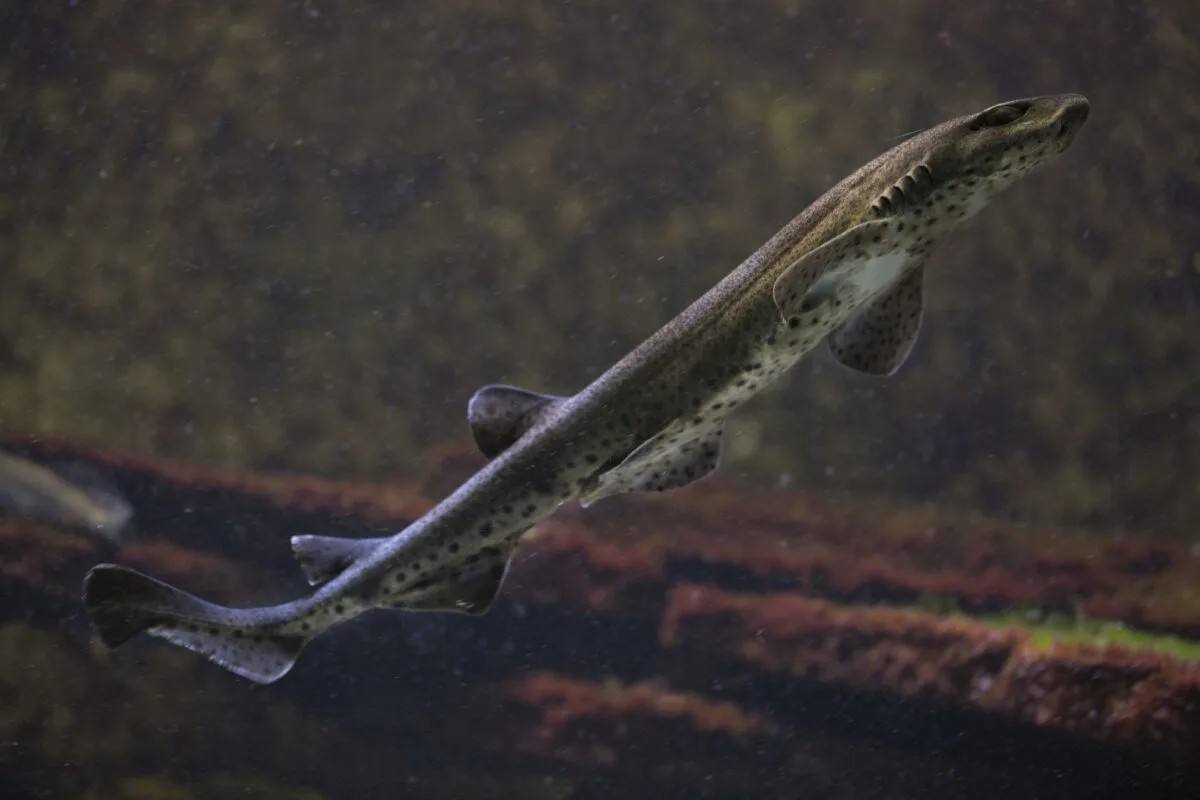The smallest shark species in the world is the Dwarf Lantern Shark, which at most measures a mere 9 inches in length.

Sharks have always been fascinating creatures that spark wonder and intrigue as much as they trigger fear and panic. Whether you’re a seasoned shark enthusiast or simply drawn to these mysterious creatures, exploring these magnificent creatures’ underwater world is an adventure.
If you’ve always been captivated by sharks but have never seen one in person before, why not start by meeting the smallest species of shark – the Dwarf Lanternshark?
This amazing creature may be diminutive, but don’t let its small size fool you! It packs a surprising punch in terms of its unique characteristics, which set it apart from all other sharks.
Read on as we dive into the mysteries of the Dwarf Lanternshark and get up close and personal with this incredible species.
Key Points
- The Dwarf lantern shark is the smallest species, measuring just 8-9 inches long.
- It has a unique light-emitting ability called bioluminescence, which helps with camouflage and communication.
- The shark is primarily found in deep, dark waters off the Pacific coast of South America.
- Despite its small size, the Dwarf Lanternshark is a ferocious predator that feeds on small fish, crustaceans, and squid.
- Conservation efforts are needed to protect this vulnerable species from habitat degradation and overfishing.
An Overview
| Traits | Information |
|---|---|
| Length | Approximately 8 – 9 inches) |
| Weight | Typically less than 7 ounces |
| Diet | Small fish, shrimp, and other small marine organisms |
| Colors | Dark brown or black with bioluminescent photophores |
| Conservation Status | Data Deficient (Insufficient information to assess population trends) |
| Habitat | Deep waters of the Caribbean Sea and Atlantic Ocean |
| Geographic Range | Found in the western central Atlantic off the coasts of Venezuela and Colombia, and possibly other regions in the Caribbean Sea and the Atlantic Ocean. |
Introducing the Dwarf Lanternshark

Sharks are unquestionably captivating creatures that have engrossed the curiosity of humans for countless generations. Sharks are a marvel of the animal kingdom, whether due to their predatory nature or incredible abilities. One shark species that is particularly unique and often not well-known is the Dwarf lantern shark. Let’s acquaint ourselves with it!
Do you want to learn about sharks on the other end of the spectrum? Read our post about the absolute biggest shark species.
Size and Appearance
As the name suggests, the Dwarf Lanternshark is one of the smallest shark species in the world. They measure just 8-9 inches in length when fully grown. Its small size and distinctive appearance make it a unique specimen among all other shark species.
The Dwarf Lanternshark possesses a sleek physique characterized by a slender body shape, an elongated and tapered snout, and prominent, sizable eyes. The skin of this shark is patterned with dark spots over a light-colored body. This serves as effective camouflage in deep waters.
Habitat and Distribution
The Dwarf Lanternshark is primarily found in deep, dark waters off the Pacific coast of South America, stretching from Colombia to Peru. It inhabits up to 4,700 feet, making it one of the deepest living shark species known. Due to the shark’s elusive nature and limited habitat, much remains to be uncovered about this species and its behavior.
Diet and Feeding Behavior
Despite its small size, the Dwarf Lanternshark is a ferocious predator in its own right. This creature’s main sustenance sources are small fish, crustaceans, and pelagic squid. Its diet is well-suited for deep-sea habitats, where food sources are often scarce. The shark’s small size and powerful jaws force it to grasp and crush its prey.
Have you ever wondered if sharks have tongues?
Adaptations of the Smallest Shark Species
Light Emitting Ability
One of the most intriguing aspects of the Dwarf Lanternshark is its ability to emit light or bioluminescence. This shark emits a soft blue-green glow from two light organs, photophores, under its belly. This bioluminescence is believed to act as camouflage by helping the shark blend in with the surrounding blue-green light of the deep ocean. This light-emitting ability also helps the Dwarf Lanternshark attract prey and communicate with other members of its species.
Good Eyesight
The dwarf lantern shark also possesses large, highly sensitive eyes that aid in detecting faint bioluminescent signals emitted by potential prey or mates. Its eyes are adapted to low-light conditions, enhancing its ability to spot and locate food sources in the dark depths.
Size
Another crucial adaptation is the dwarf lantern shark’s size. It is the smallest known shark species, and its diminutive size doesn’t only make it one of the cutest sharks. Its small size also allows it to navigate efficiently through the intricate and often cramped spaces within the deep-sea environment.
Conservation Status

The Dwarf Lanternshark is considered a data-deficient species by the International Union for Conservation of Nature (IUCN), meaning insufficient information is available to assess its conservation status.
However, because of its limited habitat and elusive nature, the species is vulnerable to habitat degradation and overfishing, highlighting the need for more research and conservation efforts.
Reproductive Behavior
Unlike many other shark species that reproduce through internal fertilization, the dwarf lantern shark employs a reproductive strategy known as ovoviviparity. This means that the female shark carries developing embryos inside her body until they are ready to hatch. However, what sets the dwarf lantern shark apart is its extremely small litter size. Typically, females give birth to only one or two pups at a time, making it one of the smallest litter sizes among all shark species.
The reproductive process of the dwarf lantern shark is further intriguing due to its specialized structures called photophores. These bioluminescent organs are present on the ventral side of the shark and are believed to play a role in attracting mates. Male dwarf lantern sharks have been observed exhibiting an interesting courtship behavior by producing intermittent flashes of light using their photophores. This behavior may serve as a visual signal to locate potential mates in the dark depths of the ocean.
How Humans Are Impacting the Dwarf Lanternshark’s Survival
The Dwarf lantern shark is the smallest shark species and only grows up to eight inches long. These intriguing creatures are found in the deep waters of the Caribbean Sea and the northern coast of South America. Despite their small size, they play a vital role in the marine ecosystem.
Unfortunately, human activities have been impacting their survival in various ways.
- Overfishing: The Dwarf Lanternshark is caught largely due to commercial fishing. They are considered by-catch in the fishing industry, which means they are unintentionally caught while targeting other species. This practice has significantly impacted their population and has resulted in a decline in their numbers over the years.
- Pollution: Human activities threaten the marine environment inhabited by the Dwarf Lanternshark, jeopardizing its delicate habitat. Plastic waste, oil spills, and other pollutants harm all kinds of marine life. Pollution can affect their food sources and reduce their chances of survival.
- Habitat loss: The destruction of the marine habitat due to development and climate change also impacts the population of the Dwarf lantern shark. These creatures rely on deep waters for survival, threatened by Climate change. Additionally, construction in coastal areas and oil drilling activities can directly destroy their habitat, making it challenging for them to survive.
The Smallest Shark Species: Wrapping Up
From their astonishing color patterns and bioluminescent abilities to their mysterious deep-sea habitats, the Dwarf Lanternshark has many captivating features that set them apart from all other sharks.
With an impressive ability to blend in among its surrounding environment while lurking through the ocean’s dark depths, this species can provide an incredible experience for those who seek out and respect these amazing animals. So, if you’re fascinated by sharks and want to experience something out of the ordinary, be sure to take some time to learn more about what makes the Dwarf Lanternshark one-of-a-kind!
Thank you for reading this article about the smallest shark species! Our oceans are deep and filled with many other interesting shark species – read about the spotted gully shark, watch a man jumping into the water with a great white shark, or find out more about shark attacks in New Jersey.
Join our Forum for free today!



